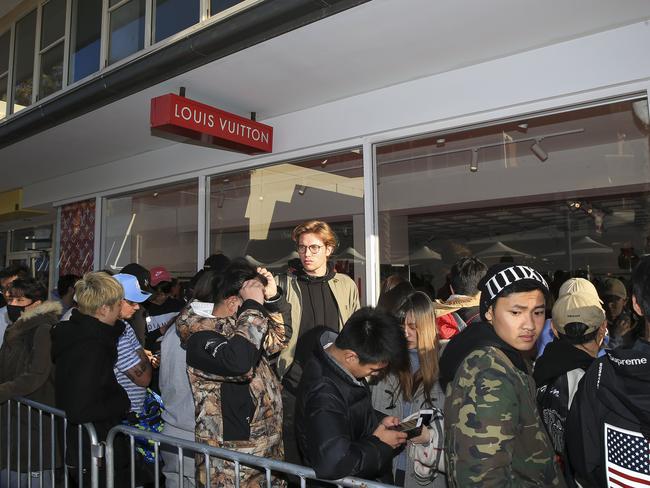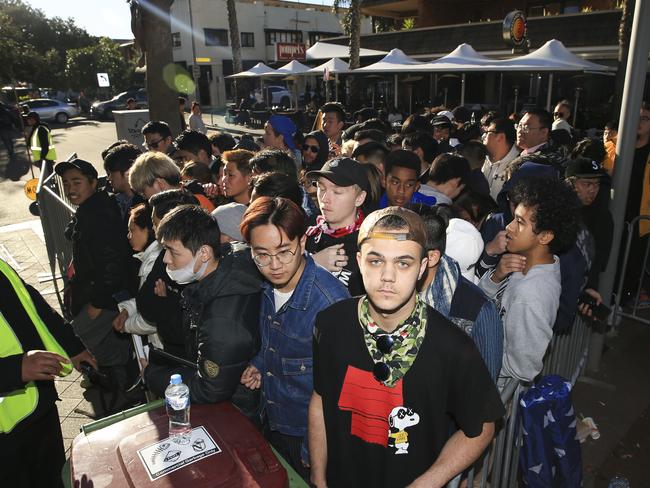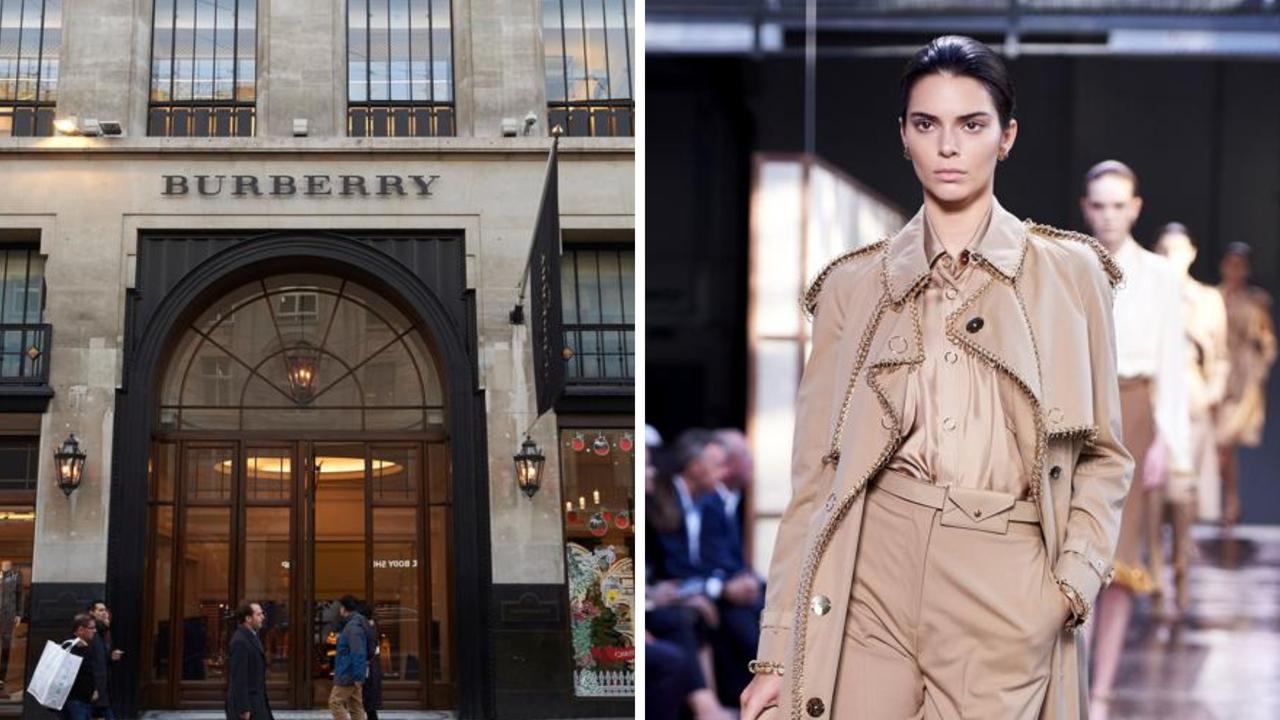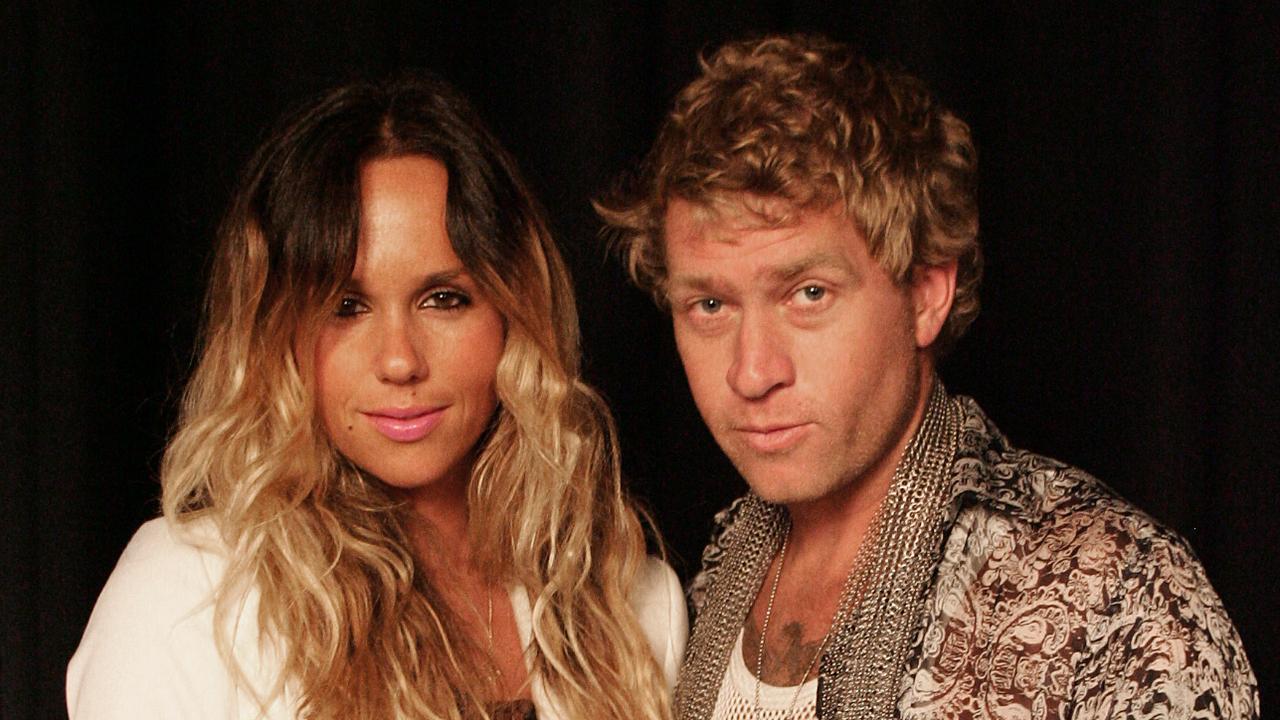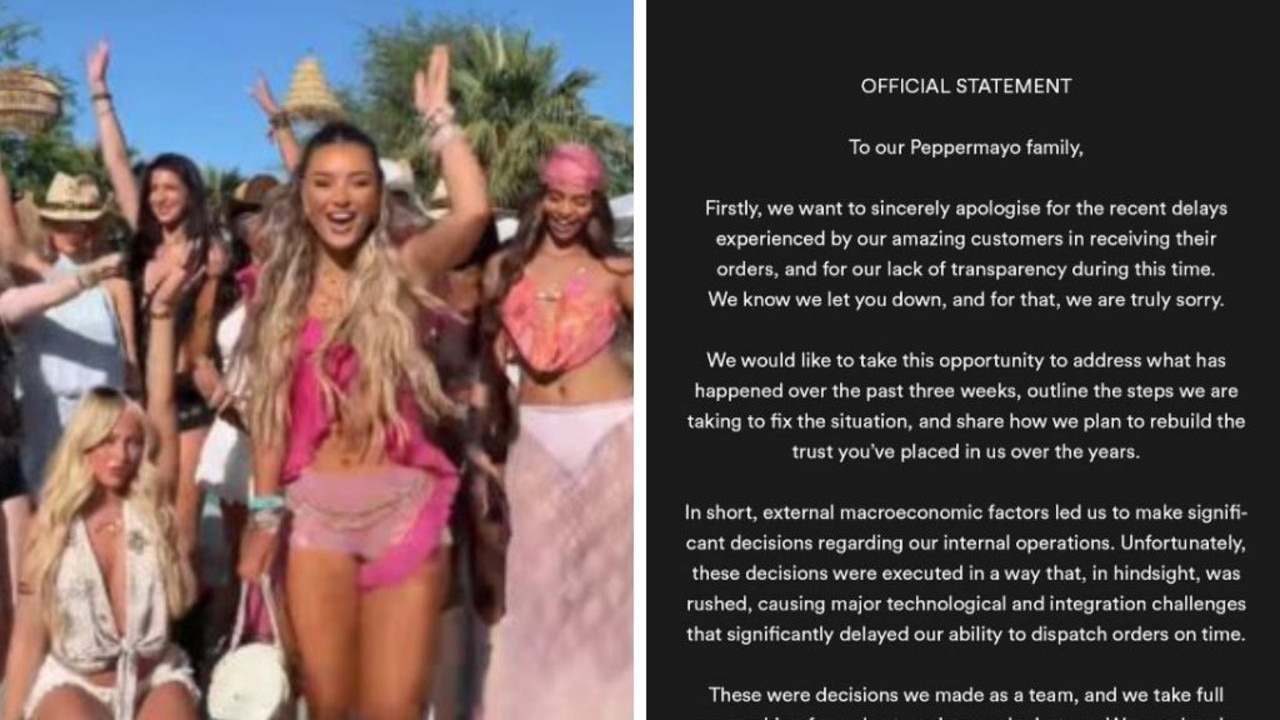Cult streetwear label Supreme: Why fans go nuts over these clothes
WHAT compels people to line up for hours in the cold to pay $500 for a white T-shirt? That’s the genius power of Supreme.
EVERY Thursday outside any of the 10 Supreme clothing stores around the world, you will find hundreds of fans, usually men dressed in hoodies and sneakers, queuing patiently to get their hands on the cult streetwear label’s weekly new product drop.
Supreme clothing isn’t particularly remarkable — think T-shirts, jumpers, caps and leather accessories — but plaster that iconic red logo on a white shirt and suddenly, it’s worth hundreds of dollars.
The brand’s success lies in its scarcity model. It releases a limited number of new products each week, nowhere near the number needed to keep up with demand.
Those lucky enough to get their hands on a piece either keep it for themselves, earning instant cool status for landing such a rare gem, or they’ll resell the items online for well above the retail price and make a handsome profit.
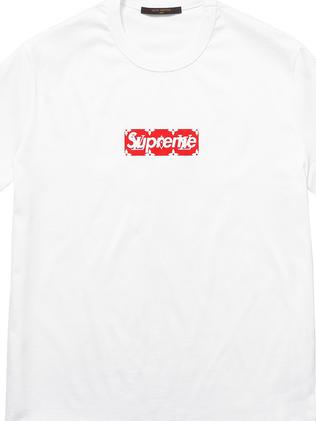
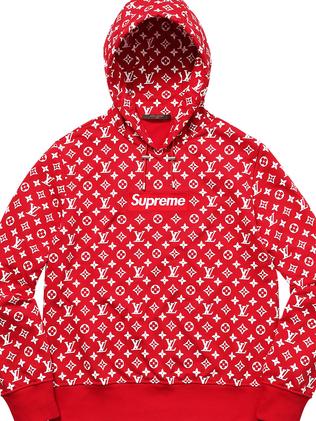
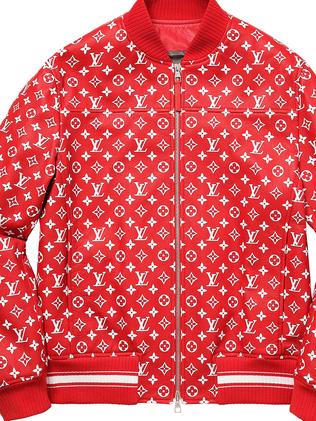
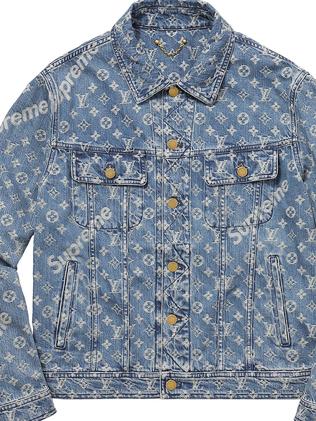
Founded in 1994 by New York designer James Jebbia, Supreme was supposed to bring affordable, quality streetwear to skaters. Now the prices have risen and it’s become a global behemoth fuelled by millions of uber fans.
“They come out with new clothes every week, every Thursday morning, so people have a reason to come back to the store every week,” wrote American author David Shapiro in his autobiographical novel Supremacist, about a man who visits every Supreme store around the world.
“They could make greater quantities of each item, but part of the appeal of the brand is that every item is rare. So they can’t make that much. And they have to make a bunch of unwearable clothing so there’s something on the shelves,” Shapiro wrote.
“Supreme wants to be a community centre for skaters, so they want people to come, and to have some pretext for being in there — looking at the clothes.”
Collaborations are Supreme’s bread and butter. It has previously partnered with North Face, Levi’s, Vans, Nike and even New York City’s Metropolitan Transportation Authority, creating a limited-edition Metrocard emblazoned with the Supreme logo.
This time, it’s joined forces with French luxury fashion house Louis Vuitton for a limited edition collection.
“I mean, there’ll be riots,” said Louis Vuitton’s men’s artistic director Kim Jones, when the collaboration was announced earlier this year.
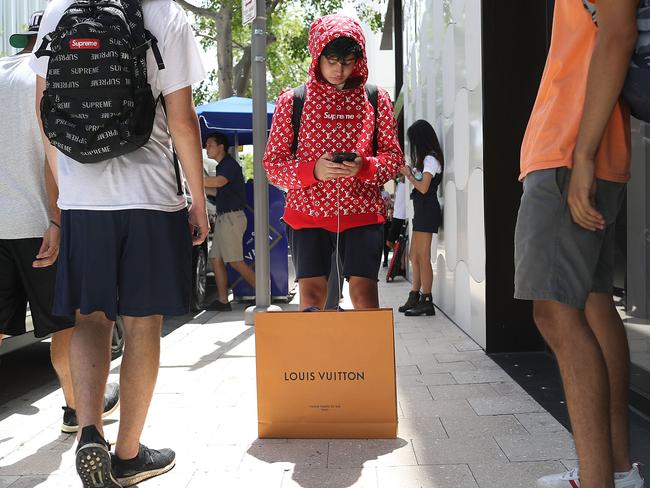
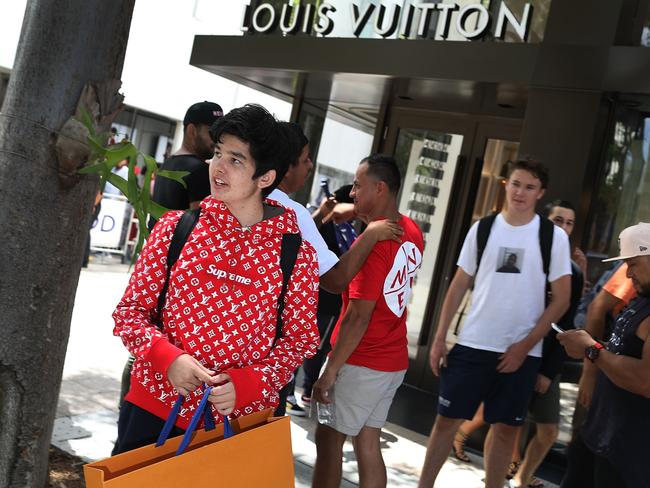
There are Supreme x Louis Vuitton pop-up stores all around the world right now, including Sydney’s Bondi Beach, where something close to a riot occurred this week, as Australian fans clamoured to get their hands on clothes and accessories priced from $345, including a heavily branded, red and white skateboard carrier that reportedly costs $71,000.
But the Sydney pop-up up, which received a visit from Canadian pop singer Justin Bieber on Tuesday, has not been without controversy.
One fan complained to news.com.au about the “incredibly disorganised” pop-up and even wrote to Louis Vuitton CEO Philip Corne to complain about the “dishonest and unfair” system.

Tristan Chant, 37, waited in line on Monday morning from 3am, and was told at 11am that the popular collaboration had sold out after just 10 to 12 people had been in.
Tristan said he was “chilled to the bone, to the point where my kidneys, back and ankles hurt from prolonged exposure” after waiting in temperatures as low as 4C with around 100 other Supreme fans.
“It was incredibly disorganised,” he told news.com.au, after failing to get his hands on the $1400 Box hoodie, $445 bandana and $500 Box logo T-shirt he wanted from the limited collection. “The queue was disorganised, there was no security.”
The pop-up store is open until Sunday from 10am-6pm.
News.com.au has contacted Louis Vuitton for comment.

